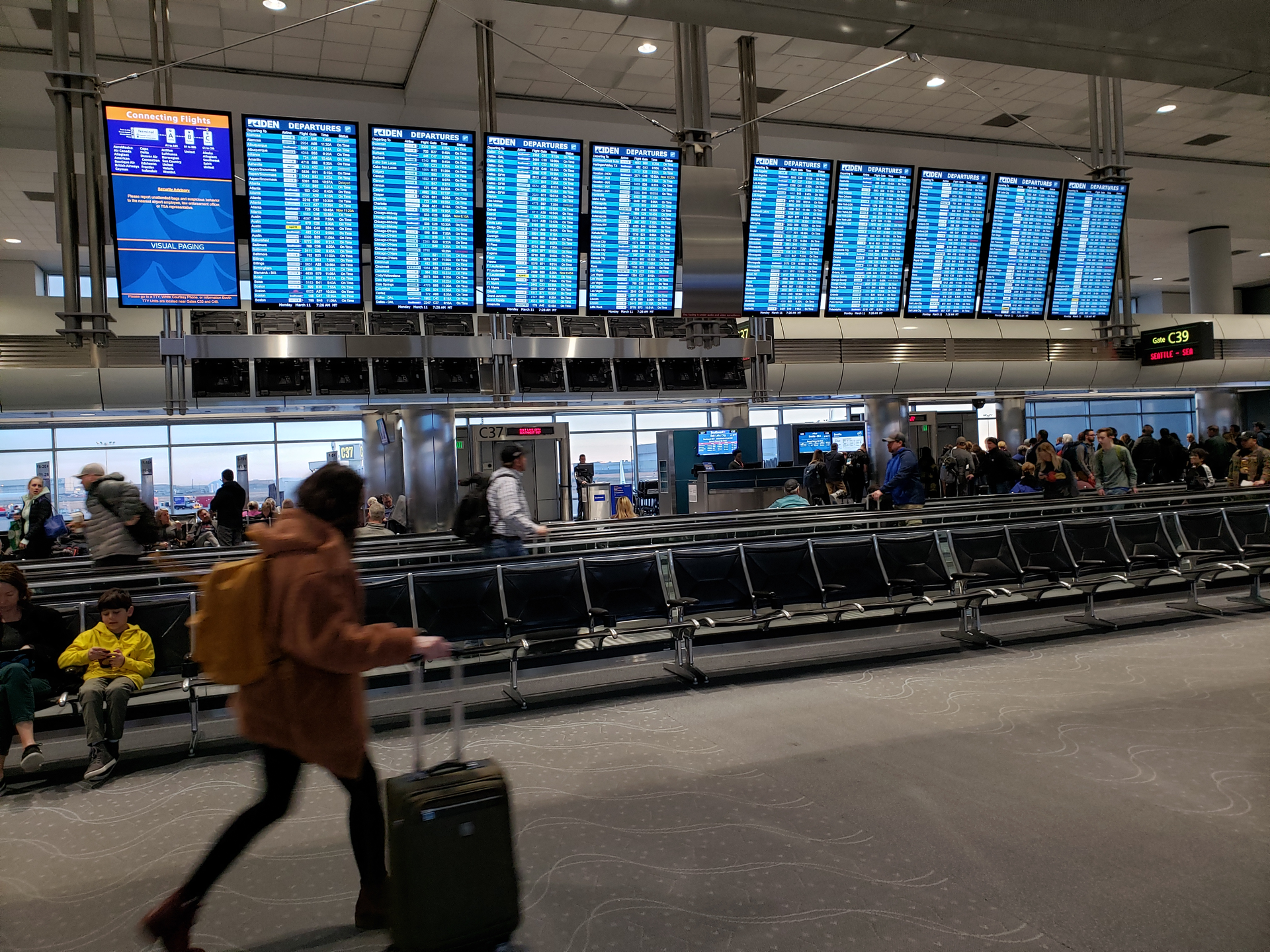Small Business
Airlines Expect Growing Profit, Despite Rising Fuel Costs
Several of the largest carriers, including United Airlines Holdings Inc. and American Airlines Group Inc., cut their capacity forecasts for the first quarter, while Delta Air Lines Inc. held growth to the low end of a previous range, according to ...
Mar. 15, 2022

U.S. airline stocks climbed as the carriers said they will trim flying to remain on track toward profits even as fuel prices soar.
Several of the largest carriers, including United Airlines Holdings Inc. and American Airlines Group Inc., cut their capacity forecasts for the first quarter, while Delta Air Lines Inc. held growth to the low end of a previous range, according to regulatory filings ahead of an investor conference Tuesday. Many simultaneously boosted their revenue expectations, citing surging travel demand in the wake of waning coronavirus infections.
The moves may help ease investor concerns over the impact of higher fuel costs as the industry looks to recover from a pandemic slump. The jump in oil prices — particularly after Russia’s attack on Ukraine — is pressuring margins for an industry that’s still struggling for profits, forcing airlines to tighten the supply of available seats in response.
Fuel prices, one of the largest costs for carriers, had increased 37% this year through Monday. Airlines now are projecting jet fuel to cost $2.80 to $3 a gallon this quarter, up from previous estimates around $2.50 a gallon.
“We’re prepared for higher fuel and confident in our ability to recapture it,” Daniel Janki, Delta’s chief financial officer, said at a JPMorgan Chase investor conference.
American rose 10% at 10:45 a.m. in New York, leading an 8.3% increase for Standard & Poor’s broad index of airline stocks.
United’s first-quarter capacity will be 19% below 2019 levels, compared with an earlier plan to be down 16% to 18%, due in part to “current geopolitical conditions,” the carrier said in its filing. Unit costs will be 18% higher than the 2019 period. Fewer flights typically allows airlines to charge more for seats when demand is strong.
Still, a rebound in demand is helping sales. Revenue should be down 20% from three years ago, United said, versus a prior outlook for down as much as 25%.
Capacity Cut
Capacity at Southwest Airlines Co. will drop as much as 10% from 2019 in the quarter, after planning for a 9% decline. The carrier held expansion plans steady for the full year and said revenue will be down 8% to 10%, while prior projections were for a decline of as much as 15%.
Southwest said unit costs excluding fuel will be up as much as 21% from 2019 levels, compared with an earlier projection for as much as 24% higher.
Delta will fly about 17% less capacity this quarter than in 2019, the higher end of an earlier outlook. Revenue will be down 22%, an improvement from its earlier projection. Stronger revenue will offset the higher fuel and produce a “solid pretax profit” for March, the Atlanta-based airline said.
American Airlines’ first-quarter flying will be as much as 12% below 2019, compared to a maximum of 10% in a previous forecast. Revenue will be 17% below 2019, while American had expected a drop of as much as 22%.
“Assuming it does not enter into any future transactions to hedge its fuel consumption, the company will continue to be fully exposed to fluctuations in aircraft fuel prices,” American said in its filing.
Fewer Flights
The increase prompted Alaska Air Group Inc. to say it will pare flying as much as 5% in the first half, while Allegiant Airlines plans to reduce second-quarter capacity between 5% and 10%.
JetBlue Airways Corp. also trimmed its flying plans, saying first-quarter capacity will be down 1% from the same period in 2019. It will “continue to moderate” the outlook into the summer months.
But sales are trending better due to the “very strong demand environment,” JetBlue said in its filing. The airline expects revenue to decline between 6% and 9% during the quarter, an improvement over the previous expectation of as much as a 16% decline.
“We’re in a very volatile environment, and when you lock in schedules in advance, you have to take a conservative view,” Chief Executive Officer Robin Hayes said at the JPMorgan conference. The airline is seeing a “very significant improvement” in revenue and strong demand for U.S.-U.K. travel.
___
©2022 Bloomberg L.P. Visit bloomberg.com. Distributed by Tribune Content Agency, LLC.
